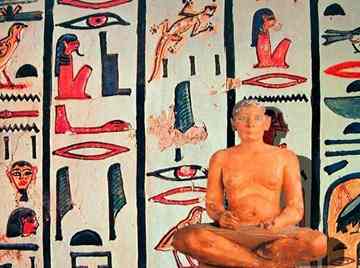The Peabody Museum's new "Visible Language" program sets its sights on demystifying ancient cultures.
 Cracking symbols and codes, deciphering ancient texts, and uncovering millennia-old secrets are some of the mystifying feats for which fictitious archaeologists are often credited. While we can’t all be like Indiana Jones, the Peabody Museum is offering a chance for the public to participate in this world of exploration and discovery.
Cracking symbols and codes, deciphering ancient texts, and uncovering millennia-old secrets are some of the mystifying feats for which fictitious archaeologists are often credited. While we can’t all be like Indiana Jones, the Peabody Museum is offering a chance for the public to participate in this world of exploration and discovery.
Sponsoring a yearlong lecture series entitled “Visible Language” that will be held in the Geological Lecture Hall, the Peabody will provide insights into the writing systems of once enigmatic cultures throughout time. Particularly this fall, the event will track the development of ancient writing systems through four upcoming lectures that range in topic from Chinese to Egyptian culture. Moreover, “Visible Language” will address the true origins of written language and introduce the progress made in each field.
Event co-coordinators Dr. Marc U. Zender, a lecturer in the anthropology department, and Pamela Gerardi, the Peabody’s director of External Relations, have been in the process of planning this program since last semester when the idea of using the concept of writing systems as the theme for a lecture series came up during a meeting.
“This is the first time the Peabody Museum is hosting a lecture series since I have been here. We have done seminars but not series, and depending on this year, we may do this more often,” Gerardi says.
The first segment of “Visible Language,” which was held on September 16, initiated the yearlong seminar with an introductory lecture by Zender.
The next installment, “Diviners and Scribes: The Origins and Development of Writing in China,” will take place October 6 with speaker Adam Smith, a humanities fellow at Columbia University.
According to Zender, the first event was successful in building a discussion with the audience, which was one of his primary goals in setting up the series.
With so many experts in the writing field at Harvard, Zender and Gerardi believe “Visible Language” will be a great way to synthesize the variety of material that exists. Moreover, it will present researchers with a unique opportunity to work cross-culturally within the visible language environment. Zender also added that these lectures would shine a light on the true origins and significance of visible language.
“Writing systems as human inventions deserve more popular attention,” Zender says. “It is a uniquely human phenomenon.”
The November 18 lecture, “Art as Writing: The Magic of Egyptian,” will focus on the Egyptian hieroglyphic writing system. The speaker of the event, professor of Egyptology Peter Der Manuelian, will refer to artifacts like royal decrees, love poems, and trial records to demonstrate how the Egyptian hieroglyphic writing system functioned as both a functional and aesthetic tool.
“Even though the system has pictures, it is a language. There are nouns, grammar and a structure, “ Manuelian says. “The principle is to see how language and the writing system are emerged into the culture, but you can’t separate art from writing and writing from art.”
Moreover, he stresses that writing deserves particular attention since it truly is a human invention.
“Writing was invented in so many places and ways that it is a great testament to human ingenuity,” Manuelian says.
“Visible Language” will ultimately make understanding writing systems more accessible to the public.
To this end, each segment of the lecture series promises to expose audiences to groundbreaking research and evocative images from vastly different cultures as a means to dispel common misconceptions and express the importance of this now commonplace yet fascinating medium of communication.
“What is so ordinary to us was once so extraordinary,” Gerardi says.
Author: Valentina V. Domeq | Source: The Harvard Crimson [October 05, 2010]